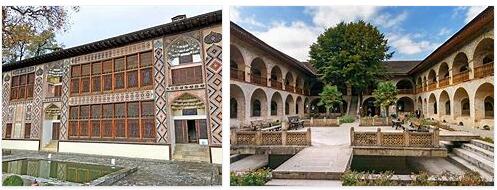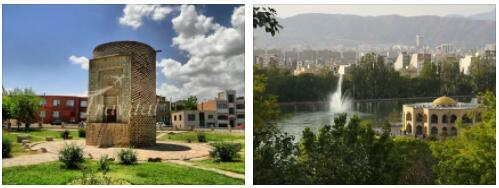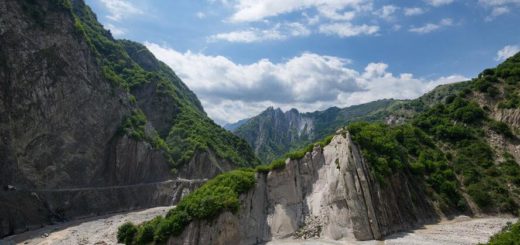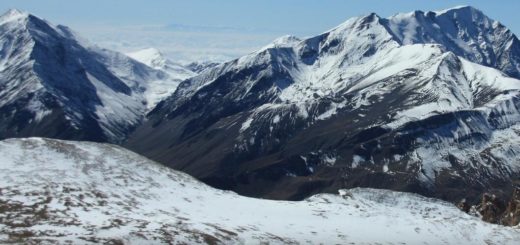Worth Seeing Cities in Azerbaijan
Here you will find study trips and round trips through the metropolises of Azerbaijan
Baku
Take a group tour of Baku, the capital of Azerbaijan! This city is located on the western coast of the Caspian Sea, on the shores of the Abseron Peninsula and is divided into eleven districts and 48 municipalities. Admire Baku’s most important sights, as well as its three districts: the old town, the Wilhelminian city and the Soviet city. Visit the Maiden Tower, the Old Fortress section, the TV Tower, the International Airport and other attractions that will be remembered. Enjoy a city break through the beautiful and interesting city of Baku!
Baku Carpet Museum
Carpet weaving has been an integral part of Azerbaijan’s history and culture for millennia. The fine craftsmanship can be traced back to the Bronze Age and the tradition is still continued in almost all regions of the country today. In order to preserve this important legacy of Azerbaijan, the carpet weaver and scientist Latif Karimov, with the support of the later President of Azerbaijan, Heydar Aliyev, initiated a first exhibition at the end of the 1960s.
In the meantime, the number of carpets collected has risen to over 10,000 magnificent pieces. Depending on the region of origin, they differ in the type of production, their pattern and color. The decors and motif variants of the carpets are numerous, the colors brilliant and natural at the same time. Most of the carpets date from the 17th to 20th centuries, but older exhibits can also be found in one of the seven different collections. These have been presented since 2014 in the new Azerbaijani State Carpet Museum in Baku, one of the most modern buildings in the country. It was built according to the plans of the Austrian architect Franz Janz in the form of an oversized roll of carpet and is located directly on the shores of the Caspian Sea near the marina.
In addition to its function as an exhibition venue for one of the most impressive carpet collections in the world, the Azerbaijani Carpet Museum is also an important cultural and educational center in the country. It is the venue for specialist symposia and conferences and a place for exchange and intensive research to preserve the national art of carpet weaving. Their preservation and development have been protected by law since 2004 and UNESCO has recognized carpet weaving as an intangible cultural heritage of Azerbaijan since 2010.
Gobustan
UNESCO World Heritage Site Gobustan
About 60 km southwest of Azerbaijan’s capital Baku, not far from the west coast of the Caspian Sea, is the area of the Gobustan Rock Art cultural landscape. The region was only rediscovered in the 1930s and is now protected as a national park. Travelers can expect the following highlights:
- Petroglyphs
- Settlements from prehistoric times
- Mud volcanoes,
- the “Gavel Dash” known as a musical stone
- and a modern museum
So Gobustan becomes the stage destination of many round trips or study trips through Azerbaijan.
Gobustan’s prehistoric rock engravings
The dry and semi-desert area of around 540 hectares, cut by ravines, characterized by boulders and stone formations, has an archaeologically unique treasure with around 6,000 rock engravings discovered so far. These were created more than 5,000 years ago, although the research does not exclude a period up to 40,000 years ago. Remnants of artificially created caves and settlements as well as burials support this assumption. The petroglyphs, which appear primitive from today’s point of view, depict people in a wide variety of activities. For example, in ritual dances, as warriors, traders or as bullfighters. Animals and star images complete the rock paintings discovered on over 1,000 different rocks.
Musical stones from prehistoric times
Some of the rock art engravings depict scenes of religious rituals and dances that were once likely to have been accompanied by the sounds of Gaval Dash. It is a stone that, when hit with smaller stones, emits sounds similar to that of a tambourine, which to this day mainly inspire local musicians. One of the Gaval Dashs was also made to sound at the 2012 Eurovision Song Contest.
Gobustan, like other parts of Azerbaijan, is the home of numerous mud volcanoes. They erupt at intervals of several dozen years with high flames, which are followed by the ejection of mud. Like the musical stones, they are said to have a close connection with the Zoroastrian religion that was once widespread in this region.
Sheki – historical center
New UNESCO World Heritage Site
In the 19th century, Sheki on the Silk Road was an international center for the production of silk. Today it is one of the most picturesque small towns in Azerbaijan and delights travelers with medieval architecture and pretty squares: a refreshing retreat from the drier south. Sheki is still relatively unknown to most tourists, but that could soon change: In July 2019, the historic center and Khan Palace were added to the UNESCO World Heritage List.
Attractions
A short distance up the hill is Sheki’s main tourist attraction, the summer palace of the Sheki Khans, who ruled this part of the Caucasus between 1743 and 1819. The two-story building from the late 18th century has breathtakingly ornate interior and exterior views. Russian wood, French stretched glass, Ottoman ceramics and Iranian mirror work went into the construction of this beautiful and symmetrical masterpiece. The facade is mostly clad with a mosaic of multi-colored glass, which is built in a wooden lattice, the so-called shebeke, without nails or glue. Examples of Shebeke craftsmanship can be found all over Sheki.
Inside, the six rooms are completely covered with elaborate frescoes depicting flowers, battles and hunting scenes. The Summer Palace is considered the most valuable piece of historical architecture of modern Azerbaijan and is a beautiful building. Even if you completely ignore the story, the rich design and aesthetics of the place alone are enough to leave you breathless.
Sheki is full of beautiful brickwork, houses with plaster molds that mimick the Sheki Khans’ palace, small shops and taverns, and brightly painted gates. In Sheki’s main streets there are of course souvenir shops that sell colorful ceramics and clothes and scarves made from the city’s typical product: silk.



